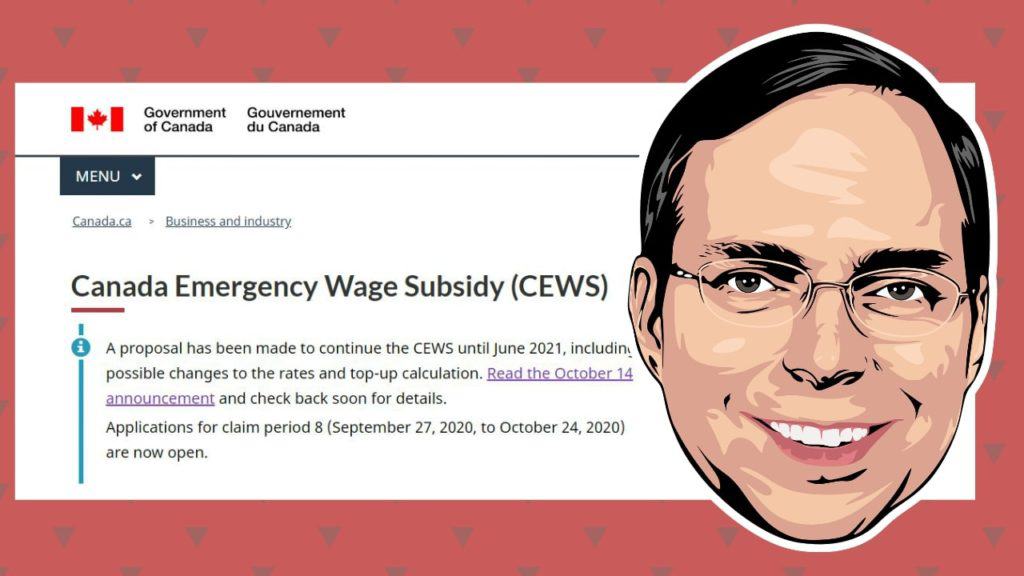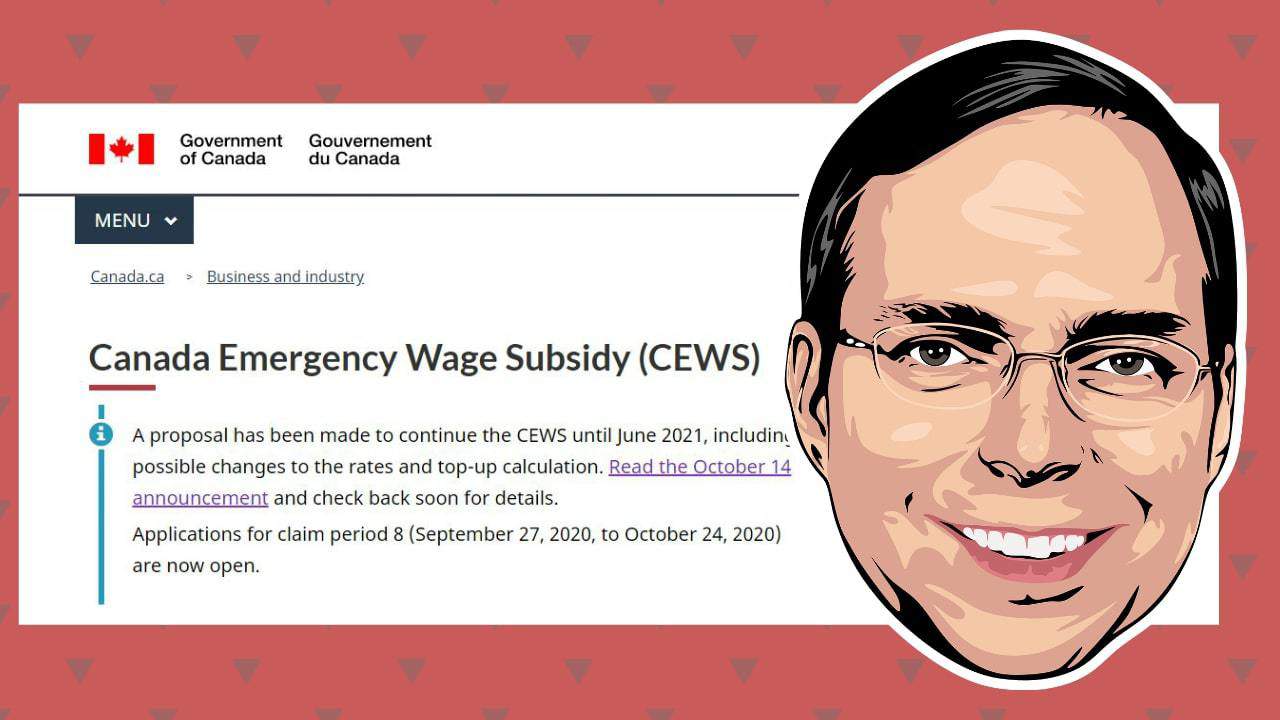Thank you for reading our Brandon's Blog. Check out our AI insolvency bot on this page and don't forget to subscribe!
The Ira Smith Trustee Team is absolutely operational and Ira, in addition to Brandon Smith, is readily available for a telephone consultation or video meeting. We hope that you and your family are safe and healthy.
- CEWS Application introduction
- CEWS application: What is the CEWS?
- CEWS application: Who is an eligible employer?
- How do I calculate my gross revenue drop for the CEWS application?
- What is the safe harbour CEWS application regulation?
- How do I determine which employees' wages are eligible for the CEWS application?
- How do I calculate the pre-COVID payroll amount for the CEWS application?
- What is the deeming rule for the CEWS application?
- The CEWS application calculations are complex
- Business is slow. What should I do to keep my business going besides a CEWS application?
- CEWS application summary
CEWS Application introduction
The expansion of the Canada Emergency Wage Subsidy (CEWS) until June 2021, is one of the last few remaining Canadian government subsidies for business as a result of the COVID-19 pandemic. The subsidy that a CEWS application can be made remains at the current subsidy level of a maximum of 65% of qualifying payroll until December 19, 2020. This measure is the government’s dedication to producing over 1 million jobs and hopefully bring back employment to the degree it was before the COVID-19 pandemic.
The purpose of this Brandon’s Blog is to provide you with our CEWS extension primer to answer what we believe are the most common questions regarding the CEWS application program extension.
CEWS application: What is the CEWS?
The federal government is providing organizations with wage help towards worker wages if they are able to reveal a decrease in earnings as a result of COVID-19. Businesses will be eligible to receive the subsidy for the wages they have actually paid their staff members from March 15th, 2020 to June 2021.
Most of CEWS guidelines stay the very same– except for:
- The computation for the top-up, which had actually been based upon a 3-month standard, will now be calculated upon the existing month’s revenue loss to supply more help to those employers needing to close down again.
- The subsidy rate will be capped at 0.8 times the income reduction (max of 65%), until December 19, 2020.
As indicated above, the program runs until June 2021.
CEWS application: Who is an eligible employer?
A lot more types of employers have been added as eligible employers, including seasonal operations and also amalgamated companies. For a complete list of who qualifies, check out the Canadian government CEWS application website.
The program does not look at the number of staff on the payroll. Rather, the main requirement is that the business had a CRA payroll account as of March 15, 2020. If your business did not have a CRA payroll number since your third-party payroll provider made remittances for you under their number, you can create one now and still be considered eligible.
How do I calculate my gross revenue drop for the CEWS application?
A revenue decline is the percent of gross revenue shed in a month in comparison to a pre-COVID-19 time frame. To determine your gross revenue, you can pick between two accounting techniques. You can choose to record revenue when received and expenditures when paid (the cash approach) or you can pick to recognize revenue and expenses in the period they are incurred (the accrual method).
Once you have picked your accounting approach, you will need to use that same bookkeeping approach for all periods. If you decide to change from one accountancy method to the other, you will then need to refile for all previous periods. That way, you will still only be using one method in your CEWS application.
To calculate the level of the revenue decline you will need to choose between:
- contrasting current month revenue to the same month in 2019 (the general method); or
- comparing current month revenue to your average revenue in January and February 2020 (the alternative method).
Whatever strategy you use, you will need to continue to make use of that exact same method for Periods 1 to 4. The only time you will be able to change your approach from one to the other will be Period 5, after which you will need to use that very same approach for the remainder of the CEWS application periods.
What is the safe harbour CEWS application regulation?
The safe harbour regulation allows organizations who would have been eligible for the 75% wage subsidy under the old CEWS application rules, to still obtain a minimum of 75% under the brand-new regulations for Periods 5 and 6 only.
So, an eligible employer with an earnings reduction of 30% or more in Periods 5 and 6 will be able to receive at the very least a 75% subsidy, or possibly much more under the new rules if their revenue reduction is very high.
How do I determine which employees’ wages are eligible for the CEWS application?
Eligible employees must be those employed only in Canada to qualify for the wage aid under a CEWS application. On top of that, for Periods 1 to 4 only, they can’t lack pay for 14 or more consecutive days within a CEWS application period. This guideline does not apply from Period 5 and beyond.
You will then have to figure out whether the staff member is arm’s length or non-arm’s length (usually household members/owners) and if they are on a paid leave or not.
How do I calculate the pre-COVID payroll amount for the CEWS application?
For Period 7 onwards, the baseline (pre-crisis) pay is just required for workers that are on leave with pay, and also staff members who are non-arm’s length. That baseline pay is the average wage paid from a specific payroll period before COVID-19.
To optimize your staff member’s baseline pay, you will need to establish which prior period offers your worker the biggest average wage. After that, add up all the amounts paid to the employee during the chosen base CEWS application time period.
What is the deeming rule for the CEWS application?
Phase 1 qualification for 75% CEWS application wage support required a decline of 15% from compared period revenues for Period 1 (March 15– April 10). It also needed a 30% decline in revenue throughout each of the three subsequent Periods (2, 3 & 4) through to July 4.
The only exemption to this was a deeming rule that said that if you receive the subsidy from your CEWS application in any one Period, you do not have to prove revenue decrease in the immediate succeeding Period. Essentially, this meant that any business that qualified would automatically get CEWS application wage assistance for eight weeks. It would after that need to requalify through a new CEWS application for any kind of later Period.
This guideline is being adjusted to be a more flexible offering because of the developing assistance levels under the guidelines for Phase 2.
Any Phase 1 CEWS application subsidy period, which ended on July 4, provided a single degree of wage assistance, i.e., 75%. Those calculations and CEWS application decisions made are unaffected by the new guidelines.
The CEWS application calculations are complex
You are right. The CEWS application process in Phase 1 was somewhat confusing and complex. For CEWS 2.0, the government has developed a better online CEWS calculator to make the calculations easier.
The CEWS calculator has actually been updated to do more of the complicated CEWS application computations for you.
Before using it, please understand that the calculator does not accumulate or keep the info you input. Also, making use of the calculator itself does not cause an audit or for alarm bells to ring at the tax authorities.
It is recommended that you utilize the calculator in one sitting so as not to lose your calculations. It is likewise suggested that you print/save your computations in case the Canada Revenue Agency does ask sometime in the future to see just how you did the numbers in your CEWS application.
Business is slow. What should I do to keep my business going besides a CEWS application?
Regrettably, this is happening to lots of businesses. The government has revealed a number of programs to aid businesses through this difficult COVID-19 pandemic time. There are additional actions you can take to plan for your business’s future.
Look at your income and expenses. Are you able to pay your fundamental business expenses? If not, can you get any relief from your vendors? Speak to your accountant/bookkeeper about your alternatives and whether it makes good sense to stay open, temporarily stop your business, or shut it down waiting for better times.
Redo your business plan, budgets and cash-flow statement for this new reality. Things are tough. Make certain you have a plan as to how your business is going to survive. Does and can your business model change to help you weather this storm?
You may need to sit down with both your accountant and a licensed insolvency trustee (Trustee). The Trustee can run through the various options available to restructure your business. Hopefully, a restructuring can be done to allow for either refinancing or the opportunity to bring in an investor. Maybe a sale of the business is possible and the purchaser will want to keep senior staff on for continuity under a multi-year employment contract.
There are many possibilities for the viable but insolvent company to avoid bankruptcy. You can call me today if your company is experiencing difficulties and you don’t know which way to turn.
CEWS application summary
I hope you have enjoyed this CEWS application Brandon’s Blog. Hopefully, you have better insight now into the CEWS program extension.
Do you or your company have too much debt? Are you or your company in need of financial restructuring? The financial restructuring process is complex. The Ira Smith Team understands how to do a complex restructuring. However, more importantly, we understand the needs of the entrepreneur or the person who has too much personal debt.
You are worried because you are facing significant financial challenges. It is not your fault that you are in this situation. You have been only shown the old ways that do not work anymore. The Ira Smith Team uses new modern ways to get you out of your debt troubles while avoiding bankruptcy. We can get you debt relief freedom.
The stress placed upon you is huge. We understand your pain points. We look at your entire situation and devise a strategy that is as unique as you and your problems; financial and emotional. The way we take the load off of your shoulders and devise a debt settlement plan, we know that we can help you.
We know that people facing financial problems need realistic lifeline. There is no “one solution fits all” approach with the Ira Smith Team.
That is why we can develop a restructuring process as unique as the financial problems and pain you are facing. If any of this sounds familiar to you and you are serious in finding a solution, contact the Ira Smith Trustee & Receiver Inc. team today.
Call us now for a free consultation.
We will get you or your company back on the road to healthy stress-free operations and recover from the pain points in your life, Starting Over, Starting Now.
The Ira Smith Trustee Team is absolutely operational and Ira, in addition to Brandon Smith, is readily available for a telephone consultation or video meeting. We hope that you and your family are safe and healthy.

